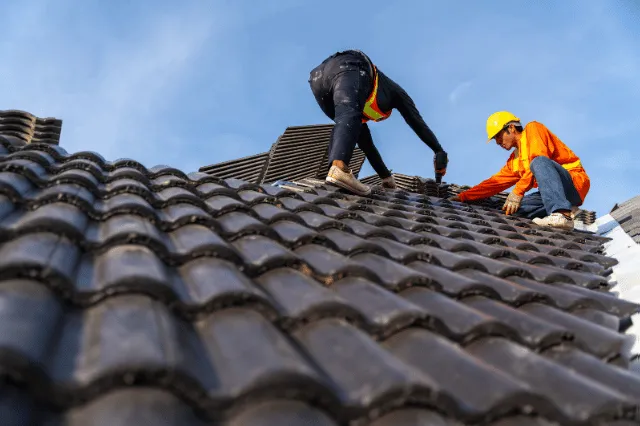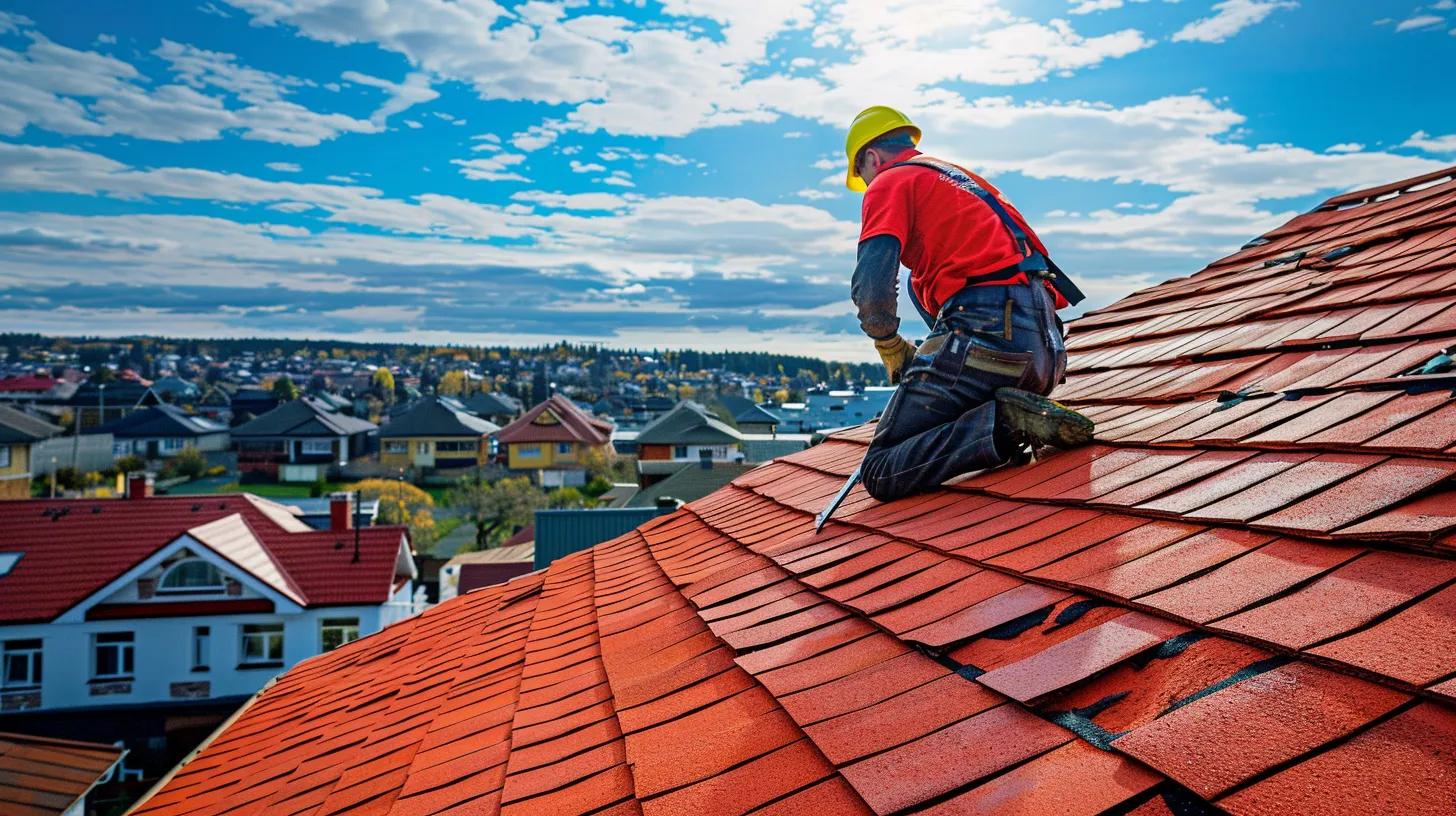
Summer Roof Maintenance: Essential Tips to Protect Your Home From July Heat

Summer Roof Maintenance: Essential Tips to Protect Your Home From July Heat
Maintaining your roof during the intense heat of July is essential to protect your home from costly damage. summer heat challenges roofing materials and structures, and adopting a servicepronation approach can help manage these stresses. In this article, learn what damages to look for, how to choose the right materials, which maintenance tasks to perform, and when to do-it-yourself versus hire a professional or even a roofer fixer for more specialized repairs. A proper roof maintenance program and regular inspections reduce leak risks, prevent wear and tear, and extend your roof’s longevity; in cases where water seepage leads to damp conditions, a mold restoration service might be required to prevent further complications. Let’s explore effective maintenance strategies to shield your roof from harsh sunlight, extreme temperature changes, and debris during summer.
What Are the Common Signs and Causes of Heat Damage on Your Roof?
Recognizing roof heat damage is the first step to protecting your home. In many cases, consulting a roofer fixer can help identify issues early on. Common signs include cracked or missing shingles, bubbling, and discoloration, sometimes indicating that a mold remediation service may be needed to address underlying moisture issues. Thermal stress from high temperatures weakens adhesives and causes material shrinkage and expansion, leading to gaps and leakage, so engaging servicepronation for a thorough inspection can help ensure lasting repairs.
What Are the Most Common Signs of Roof Heat Damage?
High heat can make asphalt shingles and polyvinyl chloride crack and curl. Blistering, granule loss, and water stains in the attic signal that the roof is failing to disperse heat properly, sometimes warranting a mold remediation service to prevent further issues. Regular monthly roof inspections especially around chimneys, skylights, or roof penetrations—can catch early signs like cracks and corrosion. If any problems are noticed, it’s wise to consult a roofer fixer who can assess the damage. Documenting these signs helps with insurance claims if heavy damage occurs, and in some cases, a servicepronation check might be recommended to ensure overall roof health.
How Does Intense July Heat Cause Roof Damage?
Intense heat causes thermal expansion in materials such as bitumen and asphalt. Prolonged high temperatures soften these materials, while rapid nighttime cooling forces contraction and can lead to cracks. A hot roof elevates attic temperatures, straining HVAC services and increasing cooling costs by roughly 5%. Homeowners experiencing roofing issues should consider consulting a roofer fixer for timely repairs. Additionally, prolonged exposure to fluctuating temperatures may lead to moisture accumulation, making mold remediation service essential. Regular temperature monitoring and reflective roofing techniques help mitigate damage.
Which Roofing Materials Are Most Vulnerable to Summer Heat?
Asphalt shingles are particularly susceptible to heat, losing protective granules under UV radiation, which can often require timely servicepronation to restore their integrity. Fiberglass roofs and slate or clay tiles can also show accelerated aging and cracking without proper thermal gap design, sometimes calling for a roofer fixer to evaluate potential damage. Metal roofs reflect heat better but may rust if coatings wear off, leading to moisture intrusion. Proper installation, insulation, and maintenance are crucial irrespective of material, as neglect may eventually necessitate a mold remediation service.
How Do You Choose the Best Heat-Resistant Roofing Materials for Summer?

Choosing the right roofing materials improves your roof’s capacity to withstand summer heat. Focusing on thermal resistance, durability, and energy efficiency is key—servicepronation can support regular maintenance to ensure these standards are met. Reflective coatings and finishes, often recommended by roofer fixer, significantly lower the roof’s surface temperature, which in turn minimizes the risk of moisture buildup that could require mold remediation service.
What Are the Top Heat-Resistant Roofing Options?
Modern options include: - Cool Asphalt Shingles: Treated with reflective coatings. - Metal Roofing: Light-colored and highly reflective. - Clay/Concrete Tiles: Offer natural insulation. - Slate and Fiberglass Shingles: Provide durability with proper maintenance.
What Are the Benefits of Installing a Cool Roof?
Cool roofs reflect solar energy, lowering attic temperatures and energy bills. They reduce thermal expansion, extend material lifespan, and decrease the urban heat island effect. In many areas, tax credits or rebates further incentivize cool roof investments.
How Do Shingles, Metal, and Tile Roofs Compare in Heat Resistance?
Asphalt shingles are affordable but less heat resistant without coatings. Metal roofs, with high solar reflectance, require maintenance to prevent corrosion. Tile roofs offer natural insulation but are heavier, sometimes requiring extra support. Consider upfront costs versus long-term energy savings when comparing options.
What Essential Maintenance Steps Protect Your Roof During Summer?
Proactive maintenance during summer prevents damage from high temperatures and intense sunlight. Regular inspections, debris cleaning, and improved ventilation not only prevent water leaks but also enhance energy efficiency.
What Should a Summer Roof Inspection Checklist Include?
Inspect for: - Cracked, curled, or missing shingles - Blisters or bubbles in roofing material - Discoloration and granule loss on asphalt shingles - Clogged gutters, downspouts, and roof drains
Monthly inspections using a professional checklist help detect early signs and ventilation issues that may increase attic temperatures.
How Can You Improve Roof Ventilation to Reduce Heat Damage?
Install ridge, soffit, or gable vents to promote airflow. Attic fans and proper insulation placement prevent blockage of vent paths. Improved ventilation can lower attic temperatures by up to 10°F, reducing energy costs and slowing roof deterioration.
How Do You Clean Your Roof Safely in Hot Weather?
Avoid cleaning during peak midday heat. Instead, work during the early morning or late afternoon. Use soft brushes and gentle cleaning solutions that preserve protective coatings. Always use a sturdy ladder and proper safety gear. For best results, hire a professional experienced with summer roof cleaning.
When Should You Perform DIY Roof Maintenance and When to Hire a Professional?

Simple tasks like cleaning gutters or performing visual inspections can be done by homeowners. However, extensive shingle replacement, structural repairs, or significant heat damage require professional expertise. Roofing contractors have the experience, tools, and safety measures to handle such tasks effectively.
What Roof Maintenance Tasks Can Homeowners Safely Do Themselves?
Homeowners can clear debris, inspect for wear, and replace a few loose shingles if they have the proper safety gear and experience. Early DIY inspections help catch damage that might otherwise lead to costly repairs.
How Do You Find and Choose a Qualified Roofing Contractor?
Seek recommendations from neighbors and local home improvement stores. Verify certifications, licenses, and insurance coverages. Check online reviews and request portfolios of similar projects. Compare estimates and ask about warranties and sustainable roofing practices.
What Questions Should You Ask a Roofing Contractor Before Hiring?
Ask: - "What is your experience repairing heat-damaged roofs?" - "Do you have proper insurance and licensing?" - "Can you provide references or project photos?" - "What warranties do you offer on your work?" - "How will you ensure worker safety and minimal disruption?"
These questions ensure you hire a professional who understands the impacts of summer heat on roof durability.
How Does Proper Roof Maintenance Improve Your Home’s Energy Efficiency?
A well-maintained roof reflects sunlight better, reduces heat absorption, and improves attic insulation. This leads to lower energy bills as your HVAC system works less to cool your home. Conversely, a damaged roof increases indoor temperatures and energy costs.
How Do Roofs Affect Home Energy Costs in Summer?
A compromised roof can cause energy losses, raising indoor temperatures by 10–15% due to inadequate insulation and ventilation. Timely maintenance—like sealing leaks and refreshing coatings—reduces these losses and maintains a cooler home environment.
What Are the Energy Benefits of Heat-Resistant and Cool Roofing?
Heat-resistant or cool roofs lower heat transfer into your home. This reduces HVAC system usage, thus cutting electricity bills while maintaining stable indoor temperatures. They also help reduce carbon emissions and mitigate urban heat island effects.
Are There Tax Credits or Rebates for Energy-Efficient Roofing?
Many local governments and utility companies offer rebates, tax credits, or low-interest loans for installing cool roofs or other energy-efficient roofing materials. Check with your local building authority or energy provider for specific details.
What Are the Best Practices to Prevent Roof Leaks and Structural Damage in July Heat?

Regular inspections and prompt repairs are essential to prevent leaks and structural damage. Ensure proper sealing, insulation, and immediate attention to signs of wear. Overheated materials can lose adhesion, leading to water infiltration that may cause mold and weakening of structural components.
How Does Heat Cause Roof Leaks and Structural Problems?
Repeated expansion and contraction from heat weakens fasteners and adhesives. Micro-cracks allow water to seep in. Existing structural vulnerabilities such as deteriorated underlayment or flashing around chimneys worsen over time if not fixed.
What Preventative Measures Can Protect Your Roof From Summer Leaks?
Routine roof maintenance includes: - Cleaning debris - Sealing cracks or gaps - Re-applying protective coatings - Upgrading to heat-resistant or cool roofing solutions - Installing robust gutter and drainage systems Regular professional inspections help catch vulnerabilities before they lead to leaks.
When Is Roof Repair Necessary to Avoid Further Heat Damage?
Minor issues may only require cosmetic fixes. However, widespread shingle damage, sagging, or significant granule loss calls for professional intervention. Timely repair prevents further water infiltration and structural damage while extending roof life.
How Often Should You Inspect and Maintain Your Roof During the Summer Months?
Monthly roof inspections are crucial during summer to catch early signs of damage, such as broken shingles and lichen buildup. Regular checks help prevent latent issues from escalating into major repairs.
What Is the Recommended Roof Inspection Frequency in Hot Climates?
In hot climates, inspect your roof at least once a month. Frequent inspections catch heat-induced damage early, reducing the risk of water infiltration and structural decay. Keeping a record of inspections is also helpful for insurance purposes.
How Does Regular Maintenance Extend Roof Lifespan in Summer?
Routine maintenance tackles minor damage before it becomes serious. Cleaning debris, clearing gutters, and ensuring good ventilation protect the roof’s appearance and energy efficiency, preserving property value and delaying full roof replacement.
What Seasonal Changes Affect Roof Maintenance Needs?
High summer temperatures accelerate shingle degradation and reduce adhesive effectiveness. Debris and algae may accumulate as the season progresses, while mid-summer storms can expose hidden vulnerabilities. Adjust your maintenance schedule accordingly to prepare for these shifts.
Frequently Asked Questions
Q: How can I tell if my roof has heat damage? A: Look for cracked, curled, or missing shingles, blistering, and discoloration. Check your attic for water stains and watch for sudden energy bill increases.
Q: What should I do if I notice a small leak during summer? A: Cover the area with a weatherproof tarp and call a professional to inspect the roof before the leak worsens.
Q: Are cool roofs worth the extra cost? A: Yes. Cool roofs lower heat transfer, cut energy bills, and extend roof life, making them a smart investment despite their higher initial cost.
Q: Can regular maintenance really reduce my cooling costs? A: Absolutely. Proper insulation, ventilation, and upkeep can reduce HVAC workload by up to 15% and lower monthly energy expenses.
Q: How long should I expect a professionally maintained roof to last in harsh summer climates? A: With quarterly inspections and proper care, a high-quality roof can last 20–30 years.
Q: What are the signs that I need to hire a professional roofing contractor? A: Widespread granule loss, severe shingle deformation, or noticeable structural sagging indicate professional help is needed.
Q: Is there a way to protect my roof from future heat damage after repairs? A: Yes. Use reflective roof coatings, ensure proper ventilation, install a cool roof, and maintain regular inspections.
Your roof is the primary barrier against harsh weather and summer heat. Regular maintenance, heat-resistant materials, and timely inspections reduce repair costs and improve energy efficiency. Protect your home by starting a dedicated roof maintenance program today, ensuring long-term durability and efficiency.
